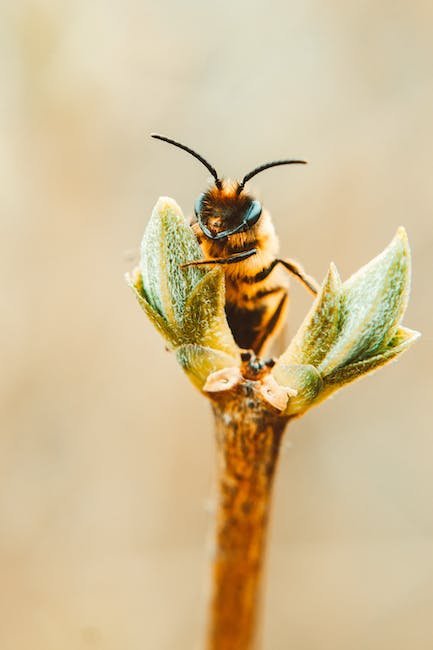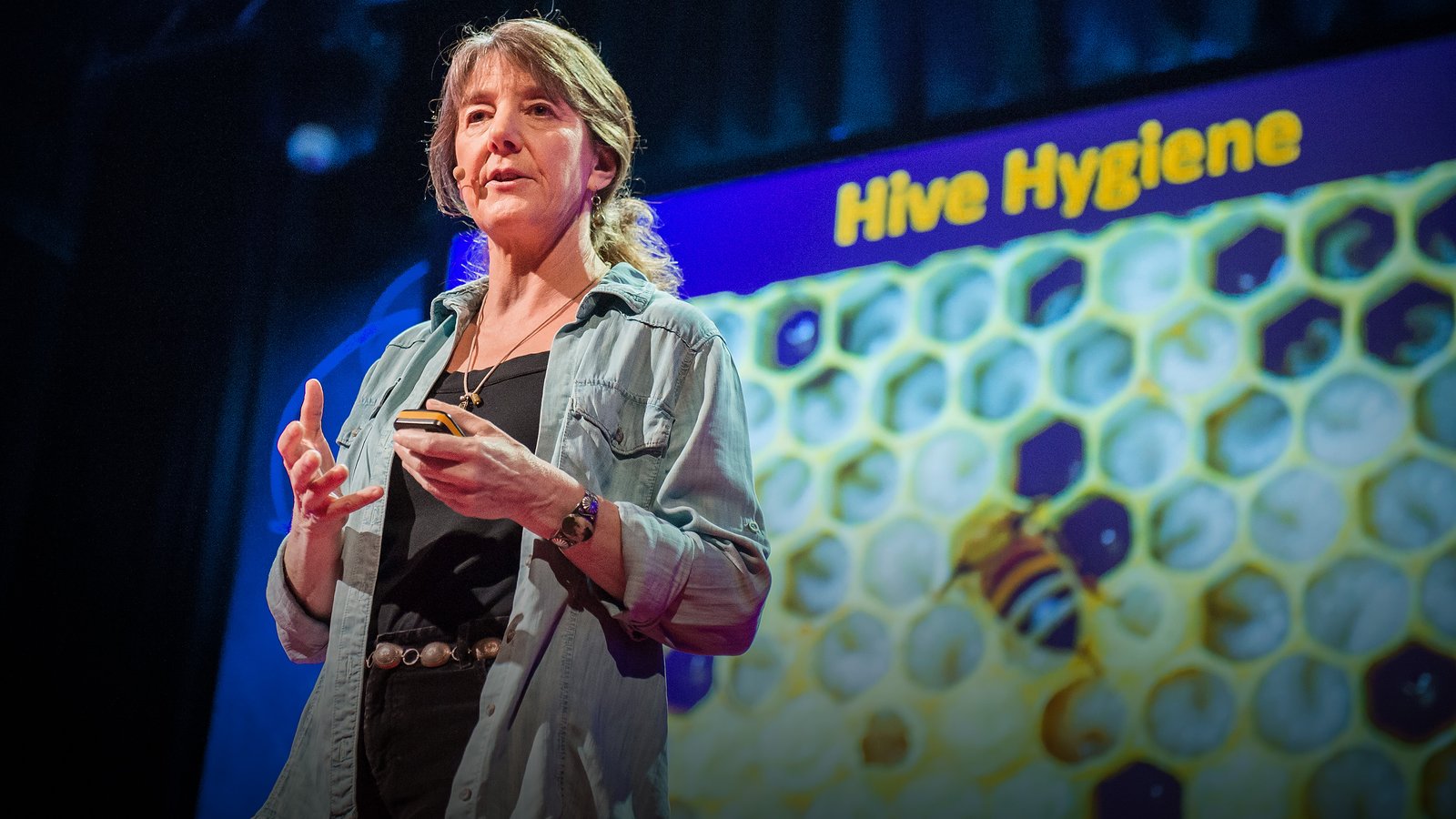The bustling hum of bees and the sight of honey-filled combs are undeniably mesmerizing. But amidst the remarkable mystery of the hive, something essential often goes unnoticed – hygiene. Maintaining a clean hive is crucial for the health and productivity of the honeybee colony, enabling them to thrive and produce the liquid gold we all cherish. In this article, we uncover a comprehensive checklist that will guide both novice and experienced beekeepers in their mission to keep their hives pristine. Discover the secrets to a tidy hive and learn how to ensure your buzzing buddies have a clean and thriving abode.
Table of Contents
- Creating an Ideal Environment for Your Bees
- Understanding the Importance of Hive Hygiene
- Practical Steps for Maintaining a Clean Hive
- Key Considerations for Cleaning Beekeeping Equipment
- Optimizing Hive Cleanliness for Healthy Bees
- Q&A
- In Retrospect

Creating an Ideal Environment for Your Bees
When it comes to beekeeping, providing the right environment for your buzzing buddies is crucial for their health and productivity. By crafting an ideal habitat, you can foster a thriving bee colony while contributing to the well-being of our precious pollinators. Here are a few key factors to consider:
- Location: Choose a site that offers ample sunlight and protection from strong winds. A peaceful and quiet area with minimal human disturbance will help your bees feel safe and secure.
- Forage: Bees need a diverse and abundant source of nectar and pollen. Plant a variety of colorful flowers, herbs, and trees in your bee-friendly garden to provide a rich and year-round food supply.
- Water: Just like us, bees need access to clean water for hydration. Place shallow water sources, such as a birdbath or shallow dish, nearby. Add small stones or floating platforms to prevent accidental drowning.
- Housing: Provide your bees with well-designed hives or bee boxes. These should protect them from extreme temperatures and offer adequate space for colony growth. Regularly inspect and maintain the hives to ensure a healthy living environment.
- Pesticide-Free Zone: Avoid using harmful chemicals in your bee’s vicinity. Pesticides and insecticides can be detrimental to their health and can even lead to colony collapse disorder. Embrace organic gardening methods and encourage others to do the same.
Remember, a thriving bee colony not only benefits your garden but also plays a vital role in pollinating crops, thus supporting local ecosystems. Be a steward of these incredible creatures by creating an environment that truly buzzes with vitality and care.

Understanding the Importance of Hive Hygiene
Hive hygiene is an essential aspect of beekeeping that goes beyond simply maintaining a clean environment for the bees. It plays a crucial role in the overall health and productivity of the hive. By , beekeepers can ensure the well-being of their colonies and increase their chances of a successful harvest.
One of the key reasons why hive hygiene is vital is that it helps prevent the spread of diseases and pests among the bee population. Bees are highly susceptible to various pathogens and parasites that can weaken or even decimate an entire colony if left unchecked. Regular cleaning and inspection of the hive allow beekeepers to promptly identify and address any signs of infection or infestation, reducing the risk of further damage.
Another benefit of maintaining hive hygiene is that it promotes a healthy and harmonious environment for the bees to thrive. Bees are meticulous creatures, and they take great care in ensuring the cleanliness of their living quarters. By helping them maintain a clean hive, beekeepers provide a conducive space for the bees to perform their vital tasks such as nursing brood, storing honey, and communicating through pheromones.
Practicing proper hive hygiene involves various tasks and practices, including:
- Regularly inspecting the hive for any signs of disease, pests, or surplus debris.
- Removing dead bees or larvae promptly to prevent the spread of pathogens.
- Keeping the hive entrance clear and unobstructed.
- Replacing old, moldy, or damaged comb with fresh foundations.

Practical Steps for Maintaining a Clean Hive
Ensuring a clean and healthy environment for your hive is crucial for the well-being of your bees. Here are some practical steps you can take to maintain a clean hive:
- Regular Inspection: Schedule regular inspections to check the state of your hive. Look for signs of disease, pests, or mold. Identifying issues early on can prevent further contamination.
- Keep It Ventilated: Adequate ventilation is necessary to maintain air circulation within the hive. Ensure there are enough ventilation holes in the hive to prevent excess moisture and maintain a comfortable temperature.
- Remove Debris: Regularly remove any debris, dead bees, or leftover wax from the hive. This helps maintain cleanliness and prevents the hive from becoming a breeding ground for pests or diseases.
- Maintain a Clean Water Source: Bees require a clean water source for hydration. Provide a shallow water bowl nearby, ensuring it is regularly replenished and clean to prevent contamination.
- Control Varroa Mites: Varroa mites are a common pest that can weaken a colony. Implement effective varroa mite control measures to protect the health of your hive and prevent the spread of disease.
- Use Natural Pest Control Methods: Instead of relying solely on chemical pesticides, consider natural pest control methods. For example, introducing certain plants that repel pests and mites into the vicinity of the hive can help deter them.
- Ensure Proper Hive Storage: During periods of hive inactivity, such as winter, ensure the hive is stored properly to protect it from external elements. Keep it in a dry place and cover it with a weather-resistant material to prevent moisture buildup and damage.
Key Considerations for Cleaning Beekeeping Equipment
Keeping beekeeping equipment clean is essential for maintaining healthy and productive bee colonies. Here are some crucial factors to consider when cleaning your beekeeping equipment:
- Regular Cleaning Schedule: Establish a routine cleaning schedule to prevent the buildup of dirt, debris, and potential disease-causing pathogens. Aim to clean your equipment at least once a year or more frequently if necessary.
- Proper Disinfection: Thoroughly disinfect your beekeeping equipment to eliminate any lingering pathogens. Use a bleach solution or approved beekeeping sanitizers to ensure the removal of harmful bacteria and viruses.
- Separate Tools for Different Hives: Avoid cross-contamination by using separate tools for each hive. This prevents the spread of diseases and strengthens colony resilience.
- Inspect and Repair: As you clean your beekeeping equipment, carefully inspect it for any damage or wear and tear. Repair or replace any broken or deteriorated parts to maintain the equipment’s effectiveness.
- Storage Considerations: After cleaning, store your equipment in a clean and dry location. Avoid exposing it to extreme temperatures or excessive moisture, as these can lead to damage or mold growth.
By following these key considerations, you can ensure that your beekeeping equipment remains in optimal condition, promoting the health and vitality of your bee colonies.
Optimizing Hive Cleanliness for Healthy Bees
Keeping beehives clean is essential for maintaining the overall health and well-being of the bees, as a clean hive creates a conducive environment for them to thrive. Here are some tips and strategies to optimize hive cleanliness for healthy bees:
1. Regular Hive Inspections: Conduct routine inspections of the hive to identify and address cleanliness issues. Look out for signs of disease, mold, or excess buildup of debris, and take the necessary steps to rectify them.
2. Effective Ventilation: Ensure proper air circulation within the hive by providing adequate ventilation. This helps in reducing moisture levels, preventing the growth of harmful mold and bacteria, and maintaining the overall cleanliness of the hive.
3. Hive Hygiene Practices: Implement good hygiene practices to minimize the risk of disease and pests. Consider using removable bottom boards to facilitate cleaning, regularly removing debris from the hive, and practicing proper hive sanitation techniques.
4. Pest Management: Employ effective pest control strategies to keep the hive free from mites, ants, or other potential invaders. Regularly monitor the hive for signs of infestation and take appropriate measures to prevent or eliminate pests.
5. Proper Storage and Maintenance: Store hive equipment properly during the off-season, ensuring they are clean and free from moisture. This helps in preventing the growth of mold and fungus, safeguarding the hive’s cleanliness.
By following these guidelines and being proactive in hive cleanliness, beekeepers can create a healthy and thriving environment for their bees. Remember, a clean hive not only promotes bee well-being but also enhances honey production and the overall success of beekeeping endeavors.
Q&A
1. Why is it important to keep your hive clean?
Keeping your hive clean is crucial for the health and productivity of your bee colony. A clean hive helps prevent the spread of diseases and pests, while also maintaining a hygienic environment for your bees to thrive.
2. How often should I clean my hive?
Regular hive inspections and cleaning should occur every 2-3 weeks during the warmer months. However, the frequency may vary depending on the size of your colony and the conditions of your local environment.
3. What tools do I need for hive cleaning?
To properly clean your hive, gather tools such as a hive tool, a stiff brush, a hive smoker, a spray bottle with a water-vinegar mixture, and clean cloths. These basic tools will help you remove debris, sanitize, and maintain your hive.
4. How should I start the cleaning process?
Begin by removing any excess honeycombs or frames with dead broods. Brush off the remaining bees gently and scrape off any wax or propolis from the frames. This will make it easier to clean and inspect the hive thoroughly.
5. What is the best way to clean the hive boxes?
Start by removing the frames and use the hive tool to scrape off any wax, propolis, or other debris from the boxes. Then, use the water-vinegar mixture to spray and sanitize the interior surfaces. Let it dry completely before placing frames back in the hive.
6. How should I clean the frames?
To clean frames, gently brush off any excess debris with a stiff brush. If necessary, use the water-vinegar mixture to spray and sanitize the frames. Allow them to dry completely before returning them to the hive.
7. Should I clean the hive bottom board?
Yes, it’s essential to clean the hive bottom board regularly. Remove it from the hive, scrape off any debris, and give it a good cleaning with the water-vinegar mixture. This will help prevent the accumulation of bacteria, pests, and diseases.
8. What should I do with the debris and waste from hive cleaning?
Dispose of the debris away from your hive to avoid attracting pests or spreading diseases. If possible, consider composting the waste to reduce environmental impact and provide nutrient-rich soil for your garden.
9. Are there any precautions I should take while cleaning the hive?
Always wear protective gear, such as gloves, a beekeeper’s suit, and a veil, to minimize the risk of stings. Additionally, handle the frames and hive components gently to avoid causing unnecessary stress or harm to the bees.
10. How can I prevent pests and diseases in the hive?
Regular cleaning, proper hive ventilation, and conducting regular inspections are key in preventing pests and diseases. Implementing good hive management practices, such as rotating frames and reducing moisture, can also help maintain a healthy hive.
In Retrospect
As your buzzing companions embark on countless aerial adventures, ensuring the cleanliness of your hive becomes an essential duty. After all, a tidy dwelling guarantees not only a sense of pride but also the well-being of your industrious inhabitants. Captivated by the fascinating habits of bees and driven by a desire to maintain their sanctuary, you’ve now armed yourself with a vital resource: a comprehensive checklist to keep your hive pristine.
With each item ticked off, you’ll navigate your way through a choreography of cleaning rituals, harmoniously choreographed between you and your honey-filled charges. This sacred dance serves not just as a testament to your dedication but also as a powerful safeguard against potential hazards that may pose harm to your beloved colony. Remember, as an apiarist steward, you hold the key to their happiness, harmony, and prosperity.
Let’s journey together through the labyrinth of details and secrets, teasing out knowledge that will empower you to elevate your role as a beekeeper extraordinaire. From the dance floor of hive inspections to the meticulous hygiene of hive tools, we’ve covered it all, ensuring no speck of dust or mite escapes your watchful eye. Armed with a feather-light brush, a duster imbued with dedication, and a heart brimming with love for these miraculous creatures, your hive will become a haven of purity and tranquility.
By embracing this checklist and imbuing your cleaning routine with dedication, you become an ambassador for bees – their humble custodian and their guardian against malicious invaders. Your efforts contribute to the perpetuation of a delicate balance within the hive, where bees can thrive and find solace amidst the swirling chaos of a demanding world.
So, fellow bee enthusiasts, let us rally together, united in our commitment to maintaining hygienic havens for our beloved honey-makers. Armed with this universal blueprint, pass it forward amongst the resilient beekeeping community, ensuring that the glory and splendor of a pristine hive perpetuates for generations to come.
Remember, as you stand amidst the scented blossoms and serenade of gentle buzzing, your tireless dedication radiates like golden honey, appreciated not only by the miniature architects who call your hive home but also by the world at large. Together, let us embrace cleanliness, nurture our honeybee companions, and in turn, witness the sweet rewards they bestow upon us. So, let’s don our veils, wield our brushes, and embark on this noble quest to keep our hives immaculate, for the love of bees and the future they hold.
As an affiliate, my content may feature links to products I personally use and recommend. By taking action, like subscribing or making a purchase, you’ll be supporting my work and fueling my taco cravings at the same time. Win-win, right?
Want to read more? Check out our Affiliate Disclosure page.